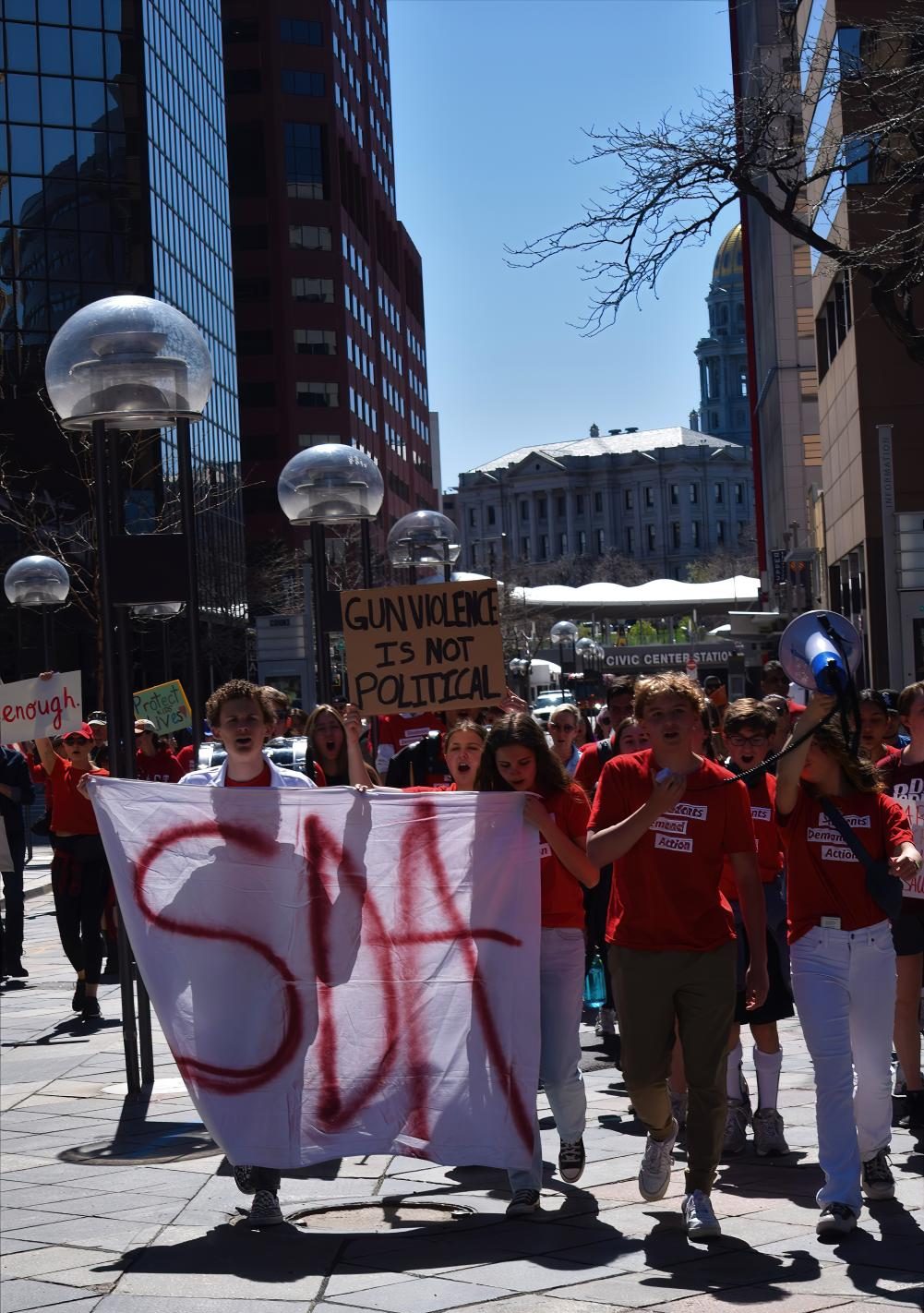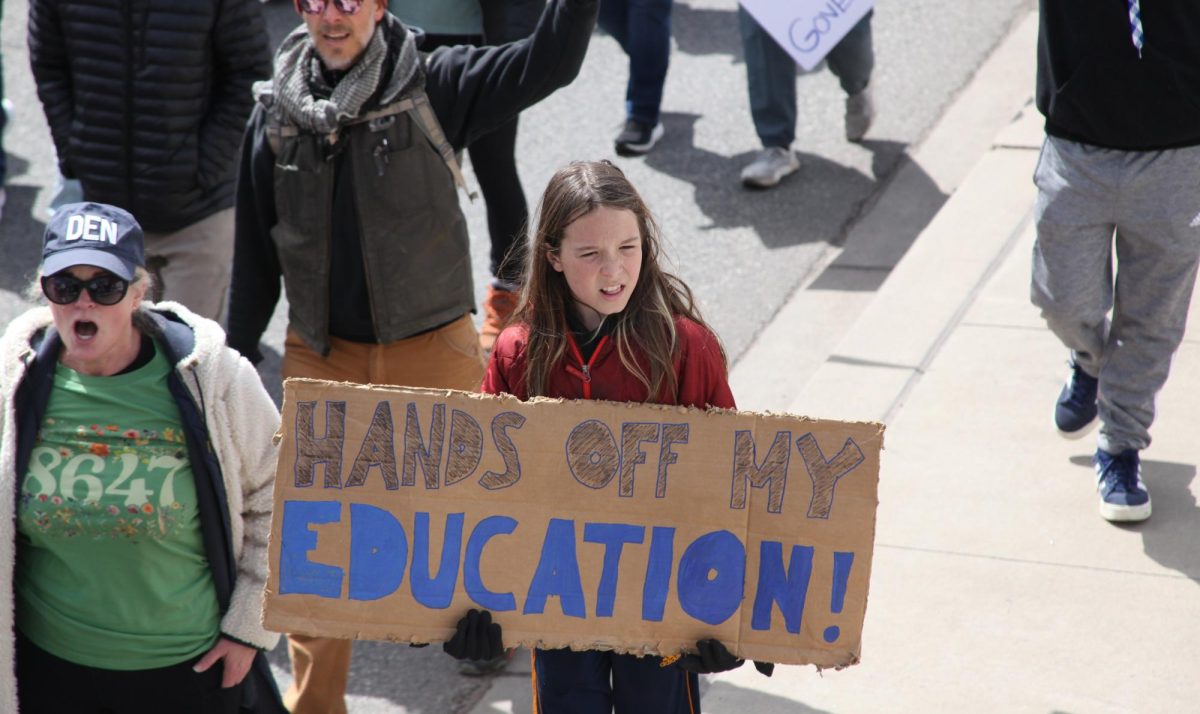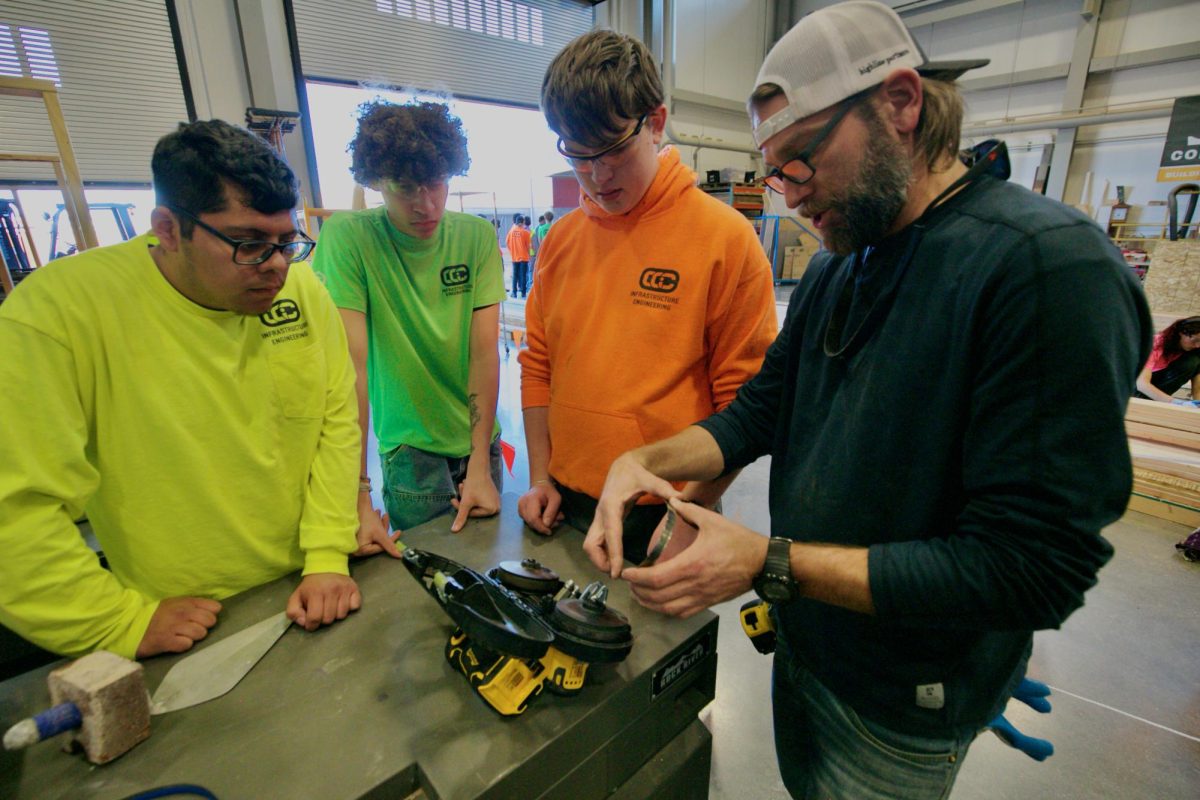Always facing the doors. Hyper-aware of all exits. Constant fear. These are all normal behaviors that STEM School Highlands Ranch shooting survivor Lucy Sarkissian faces everyday.
On May 7, 2019, two shooters entered STEM School, less than 15 miles from Creek, killing one person and injuring eight others. In the room across the hallway from the victim was 14-year-old Sarkissian.
The anxiety and fear surrounding shootings and safety continues to affect Sarkissian’s everyday life, even four years later.
“Every single noise that happens is an evaluation of ‘is that a gunshot? Is that a door slam? Is that a book getting dropped?’” Sarkissian said. “There’s this constant evaluation that’s become so normalized in my life.”
According to the Gun Violence Archive, since the beginning of January 2023, there have been over 18 school shootings, killing five people under the age of 18.
Denver East High School has been directly impacted by gun violence. Two East administrators, Eric Sinclair and Jerald Mason, were injured in an on-campus shooting that left Sinclair in critical condition. Just three weeks prior, 16-year-old student Luis Garcia was killed in a drive-by shooting near campus.
Over a month later, many students still struggle with intense anxiety every time they enter the school.
“Lots of kids are on high alert,” East junior Bel Kales said. “Kids don’t feel safe. Kids are really saddened. [It’s hard to focus with] how unsafe I feel at school.”
Since the Columbine shooting in 1999, fear and anxiety surrounding school shootings has grown significantly, and for many students the Sandy Hook shooting of 2012 made it clear that these tragedies were not isolated.
According to The Washington Post, over 349,000 students have experienced gun violence at school since Columbine. One could make the argument that the number of people impacted by gun violence is significantly higher because of the constant media attention it retains.
“As I grew up, I became more aware [of gun violence’s presence] but it’s always been kind of in the back of my mind,” junior Nandita Nair, Creek Students Demand Action president, said. “I do remember my first experience I had with [school shootings] was when [I was] the same age as the kids who were victims of Sandy Hook.”
After Sandy Hook, many protocols were put in place to help prevent more incidents of gun violence within schools.
“[The] adults are doing their best to keep the school safe,” Creek psychologist Dr. Lisa Geissler said.
According to the National Conference of Legislators, in the 2015-2016 school year, about 42% of all public schools reported having an SRO or other school security personnel present on school grounds for at least one week during the school year. Even with increased security there has been little evidence to show that increased police presence makes the campuses any safer.
The irony is that some of the precautions and protocols put in place, including lockdowns and SROs on campus, can cause more anxiety.
In fact, according to a Congressional Research Service report, there is evidence that the presence of SROs on campuses may increase law enforcement involvement in discipline for minor, nonviolent offenses.
According to Chicago’s Lawyers’ Committee for Civil Rights , the presence of SROs generally increase students’ fear and can negatively impact their perceptions of safety.
Following the short-term effects of gun violence on students, there are also many potential long term effects such as depression, PTSD, and substance abuse.
“[I’m still] not comfortable going to a high school,” Sarkissian said. “It’s more than just anxiety. I was officially diagnosed with Post Traumatic Stress Disorder less than six months after the shooting.”
According to Stanford Institute for Economic Policy Research, the average monthly number of antidepressant prescriptions written to people under the age 20 by providers located near schools that experienced a fatal shooting was 21.3% higher than the previous two to three years prior to the shooting.
Although there is anxiety and fear, the recurring events have caused gun violence to be considered the new “normal.”
“I’m just sad that this is the culture you guys have to live in and that it’s something that unfortunately [students are] becoming accustomed to,” Geissler said.
While many people are working to reduce gun violence and create a safer environment for students, the fear and anxiety will continue to walk with people throughout their everyday life and create a overwhelming fear for students on school campuses.
“It’s not a problem of if it happens to us, it’s when it happens to us,” Nair said. “It’s almost inevitable.”
This story was awarded Third Place General Feature by the Columbia Scholastic Press Association.








